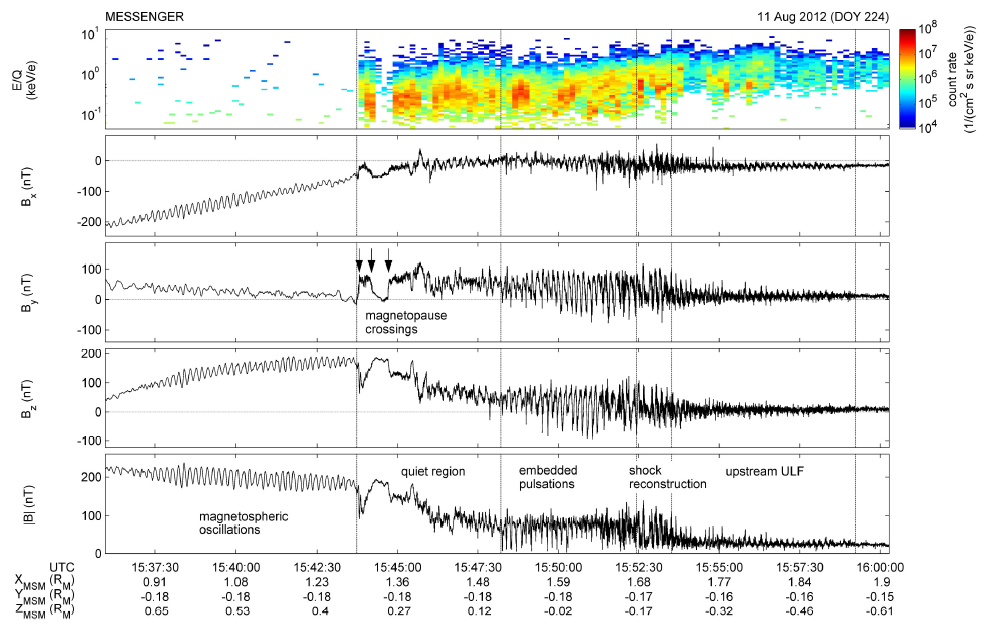Mercury Bow Shock Results

Collisionless shocks are abundant in the universe, and they can for example be found both inherently in the solar wind and as bow shocks sunward of planets and comets. The terrestrial bow shock is the closest, most accesible, and most well-studied such object, however, recent planetary missions have made it possible to as look at some of the other planet in our solar system. These new measurements allow us to test and try our understanding in a broader perspective, and within different parameter regimes.
Mercury's bow shock differs the terrestrial primarily in two respects: It is significantly weaker (i.e. lower Mach numbers) and it has a much smaller scale size. In
Sundberg et al. [2013] (
below) we investigate one specific bow crossing by the MESSENGER spacecraft where the upstream solar wind magnetic field was nearly radial and steady over time period longer than the spacraft transit time, see
Figure 1 (
below). These observations show that for such conditions, Mercury's bow shock can go through a self-reformation process that is, in contrast to that at the Earth, extremely periodic. Over the 25-minute-long observation, indications of a 10 second reformation of the bow shock could be seen not only in the magnetosheath and the upstream region, but also within the magnetosphere in the form of magnetic compressions. These observations show that the bow shock in fact can be a direct source of energy input into the magnetosphere. The extreme periodicity of the event can likely be attributed to the short spatial scales at Mercury, which leads to a collective behaviour of the bow shock, rather than the patchwork of pulsations and reformations as is observed at the more extensive shock present upstream of Earth.
 Figure 1:
Figure 1: MESSENGER magnetic field measurements on 11 August 2012. The top panels shows the io energy-per-charge spectrum, the middle panels show the X, Y, and Z components of the magnetic field, and the bottom panels shows the absolute magnetic field. The magnetic field recordings show strong 10-s wave activity in the magnetosphere (left part of the plot), the magnetosheath (middle), and the upstream solar wind (right).
References:
Sundberg, T., S. A. Boardsen, J. A. Slavin, V. M. Uritsky, B. J. Anderson, H. Korth, D. J. Gershman, J. M. Raines, T. H. Zurbuchen, and S. C. Solomon (2013), Cyclic reformation of a quasi-parallel bow shock at Mercury: MESSENGER observations, J. Geophys. Res. Space Physics, 118, 6457–6464,
doi:10.1002/jgra.50602.